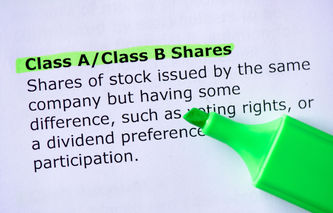Definition
The term capital stock is used to describe the authorized and issued transferable units of ownership in a corporation. Capital stock can include both common as well as preferred securities. The value of all capital stock issued can be found on the company's balance sheet.
Explanation
Companies can raise funds in two ways. They can borrow money from creditors, thereby increasing the liabilities of the business. Alternatively, they can raise cash by issuing shares of common or preferred stock, thereby increasing owner's equity.
The value of capital stock appearing on the balance sheet allows investors to understand the amount of funds raised through the issuing of stocks. It is also considered a permanent investment in the corporation, and cannot be withdrawn by shareholders. This feature provides creditors with some protection.
Generally, the owner's equity section of the balance sheet will contain at least two line items that relate to equity holders:
Capital Stock: the original dollar value of the investment by stockholders.
Retained Earnings: the earned capital not returned to shareholders in the form of dividends.
Companies have the option of repurchasing stock as well as issuing additional shares. Rapidly growing companies will issue capital stock to help fund additional investments in assets. Poorly performing businesses may also issue stock to help pay debts coming due.
Companies will sometimes repurchase shares as an alternative to issuing dividends. In doing so, they reduce the total number of shares outstanding. If the company can maintain profits, repurchasing of stock will effectively increase earnings per share.



